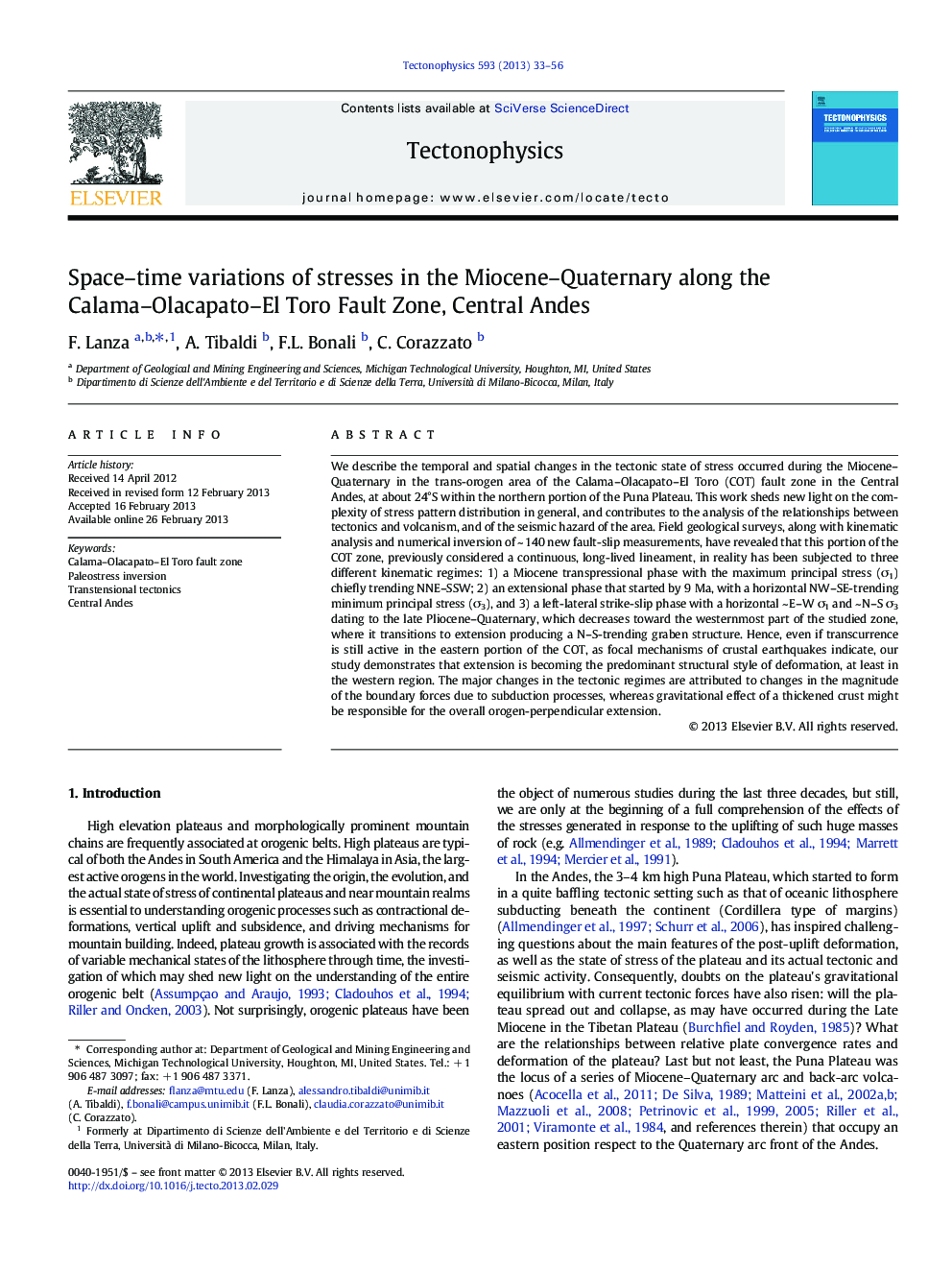| کد مقاله | کد نشریه | سال انتشار | مقاله انگلیسی | نسخه تمام متن |
|---|---|---|---|---|
| 4692315 | 1636792 | 2013 | 24 صفحه PDF | دانلود رایگان |

We describe the temporal and spatial changes in the tectonic state of stress occurred during the Miocene–Quaternary in the trans-orogen area of the Calama–Olacapato–El Toro (COT) fault zone in the Central Andes, at about 24°S within the northern portion of the Puna Plateau. This work sheds new light on the complexity of stress pattern distribution in general, and contributes to the analysis of the relationships between tectonics and volcanism, and of the seismic hazard of the area. Field geological surveys, along with kinematic analysis and numerical inversion of ~ 140 new fault-slip measurements, have revealed that this portion of the COT zone, previously considered a continuous, long-lived lineament, in reality has been subjected to three different kinematic regimes: 1) a Miocene transpressional phase with the maximum principal stress (σ1) chiefly trending NNE–SSW; 2) an extensional phase that started by 9 Ma, with a horizontal NW–SE-trending minimum principal stress (σ3), and 3) a left-lateral strike-slip phase with a horizontal ~ E–W σ1 and ~ N–S σ3 dating to the late Pliocene–Quaternary, which decreases toward the westernmost part of the studied zone, where it transitions to extension producing a N–S-trending graben structure. Hence, even if transcurrence is still active in the eastern portion of the COT, as focal mechanisms of crustal earthquakes indicate, our study demonstrates that extension is becoming the predominant structural style of deformation, at least in the western region. The major changes in the tectonic regimes are attributed to changes in the magnitude of the boundary forces due to subduction processes, whereas gravitational effect of a thickened crust might be responsible for the overall orogen-perpendicular extension.
► We describe changes in the state of stress along the Calama–Olacapato–El Toro fault.
► We perform a kinematic analysis and a stress inversion of ~ 140 new fault-slip data.
► 3 different kinematic regimes characterize the area from Miocene to Quaternary.
► Spatial changes affect the youngest deformation, with extension occurring to the W.
► A gravitational collapse model explains the orogen-perpendicular extension.
Journal: Tectonophysics - Volume 593, 8 May 2013, Pages 33–56